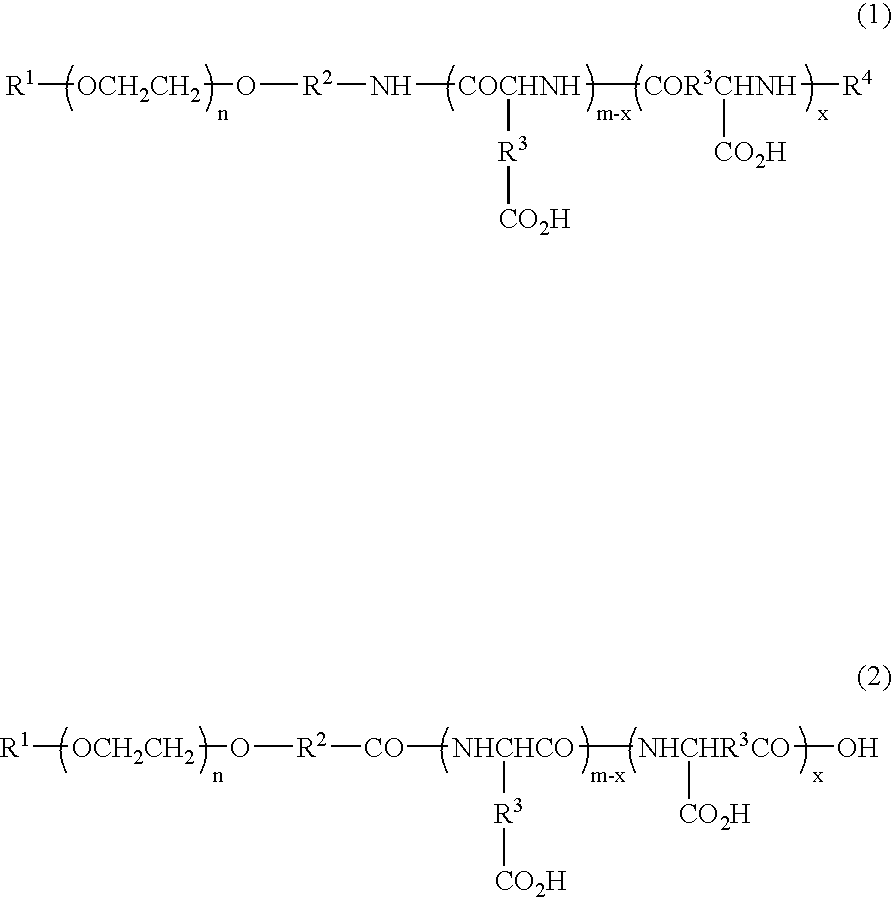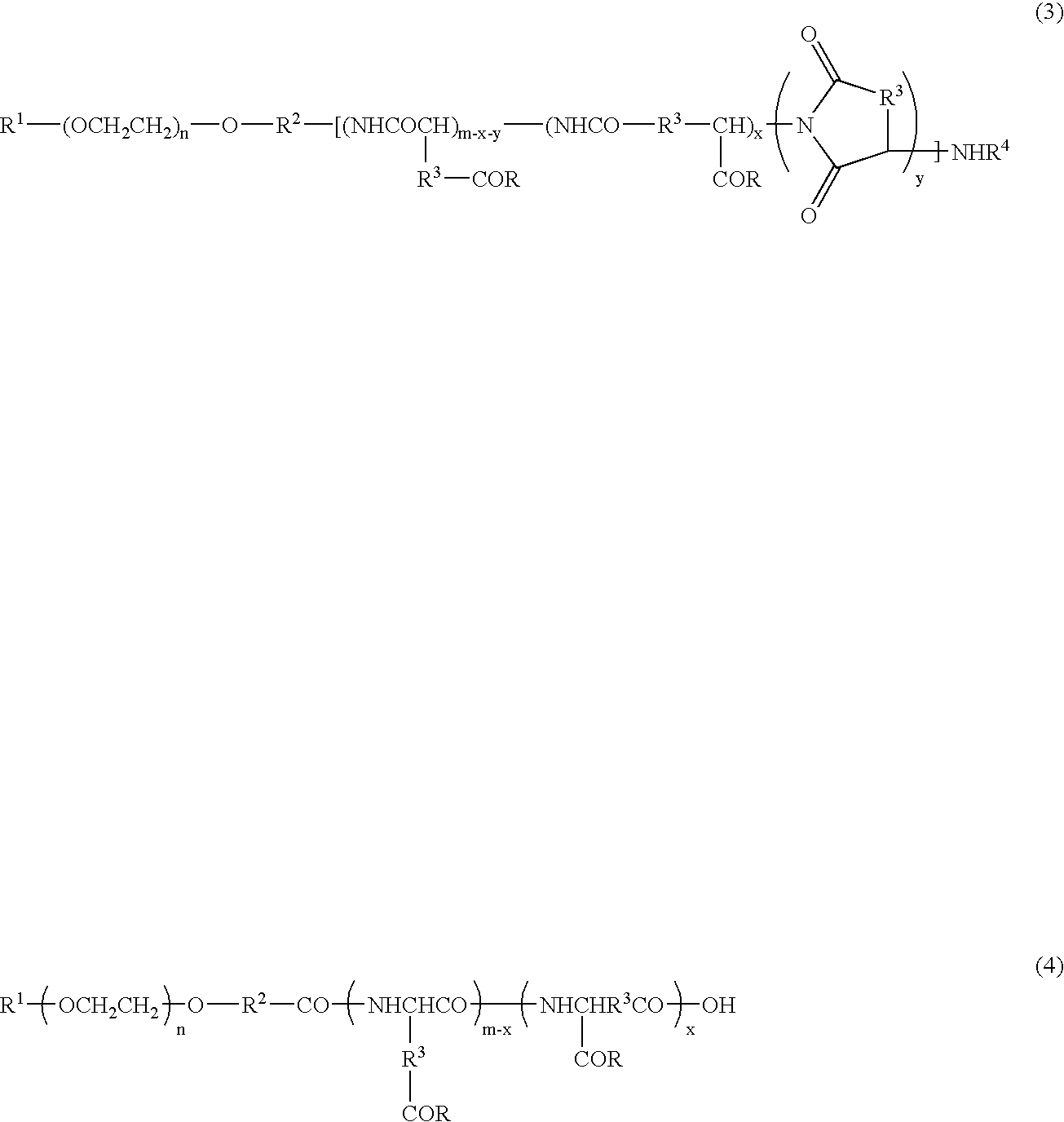Block copolymer reduced in impurity content, polymeric carrier, pharmaceutical preparations in polymeric form and process for the preparation of the same
- Summary
- Abstract
- Description
- Claims
- Application Information
AI Technical Summary
Benefits of technology
Problems solved by technology
Method used
Image
Examples
production example 1
[0078]Toyopearl 650 M (900 mL), reproduced into an H+ form, was charged into a glass column. One-terminal-methoxy / one-terminal-3-aminopropoxy polyethylene glycol (29.97 g) (weight-average molecular weight 5287) was dissolved in 1.98 L of a 10% acetonitrile aqueous solution, and this solution was allowed to permeate through the column. After the column had been washed with 1.6 L of 10% acetonitrile aqueous solution, the column was developed by using 0.4 M aqueous ammonia containing 10% acetonitrile. Fractions containing the target compound were collected, and after having been condensed under reduced pressure, these were frozen and dried to obtain 25.71 g of purified one-terminal-methoxy / one-terminal-3-aminopropoxy polyethylene glycol.
production example 2
[0079]The purified one-terminal-methoxy / one-terminal-3-aminopropoxy polyethylene glycol (23.32 g), obtained in production example 1, was dissolved in 466 mL of dimethyl sulfoxide (DMSO), and heated to 35° C. To this was added 42.87 g of β-benzyl L-aspartate-N-carboxylic anhydride (BLA-NCA), and allowed to under go a reaction for 22 hours. The reaction mixture was dripped into a mixed solvent containing 3.73 L of diisopropyl ether (IPE) and 0.93 L of ethanol (EtOH), and the deposited precipitate was filtered, and washed with a mixed solution (4:1) of IPE and EtOH, followed with IPE, and then vacuum-dried so that 54.29 g (number of aspartic acid units: 29.0) of one-terminal methoxy polyethylene glycol-poly(β-benzyl L-aspartate) copolymer was obtained.
production example 3
[0080]The one-terminal methoxy polyethylene glycol-poly (β-benzyl L-aspartate) copolymer (52.85 g), obtained in production example 2, was dissolved in 529 mL of dimethyl formamide, and heated to 35° C. To this was added 2.50 mL of acetic anhydride, and allowed to undergo a reaction for 3 hours. The reaction mixture was dripped into a mixed solvent containing 4.76 L of diisopropyl ether (IPE) and 0.53 L of ethanol (EtOH), and the deposited precipitate was filtered, and washed with a mixed solution (9:1) of IPE and EtOH, followed with IPE, and then vacuum-dried so that 51.67 g of one-terminal-methoxy polyethylene glycol-poly(β-benzyl L-aspartate) copolymer N-acetylated compound was obtained.
PUM
| Property | Measurement | Unit |
|---|---|---|
| Percent by mass | aaaaa | aaaaa |
| Acidity | aaaaa | aaaaa |
Abstract
Description
Claims
Application Information
 Login to View More
Login to View More - Generate Ideas
- Intellectual Property
- Life Sciences
- Materials
- Tech Scout
- Unparalleled Data Quality
- Higher Quality Content
- 60% Fewer Hallucinations
Browse by: Latest US Patents, China's latest patents, Technical Efficacy Thesaurus, Application Domain, Technology Topic, Popular Technical Reports.
© 2025 PatSnap. All rights reserved.Legal|Privacy policy|Modern Slavery Act Transparency Statement|Sitemap|About US| Contact US: help@patsnap.com



